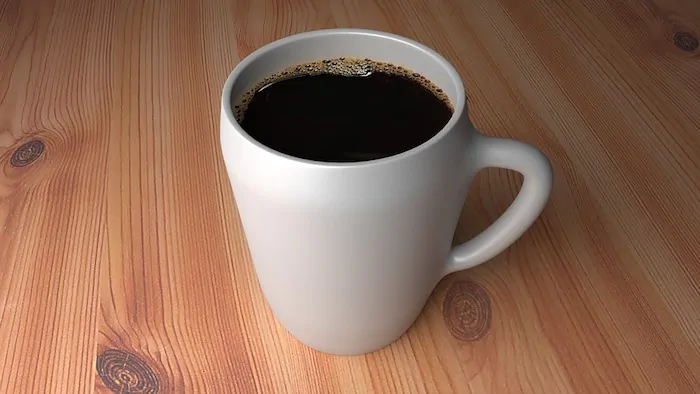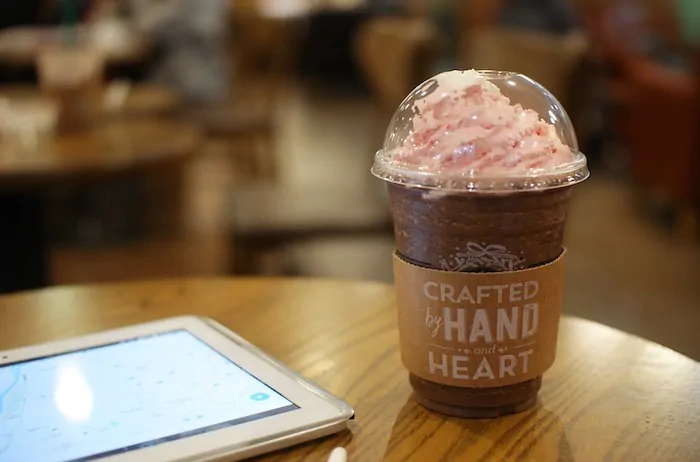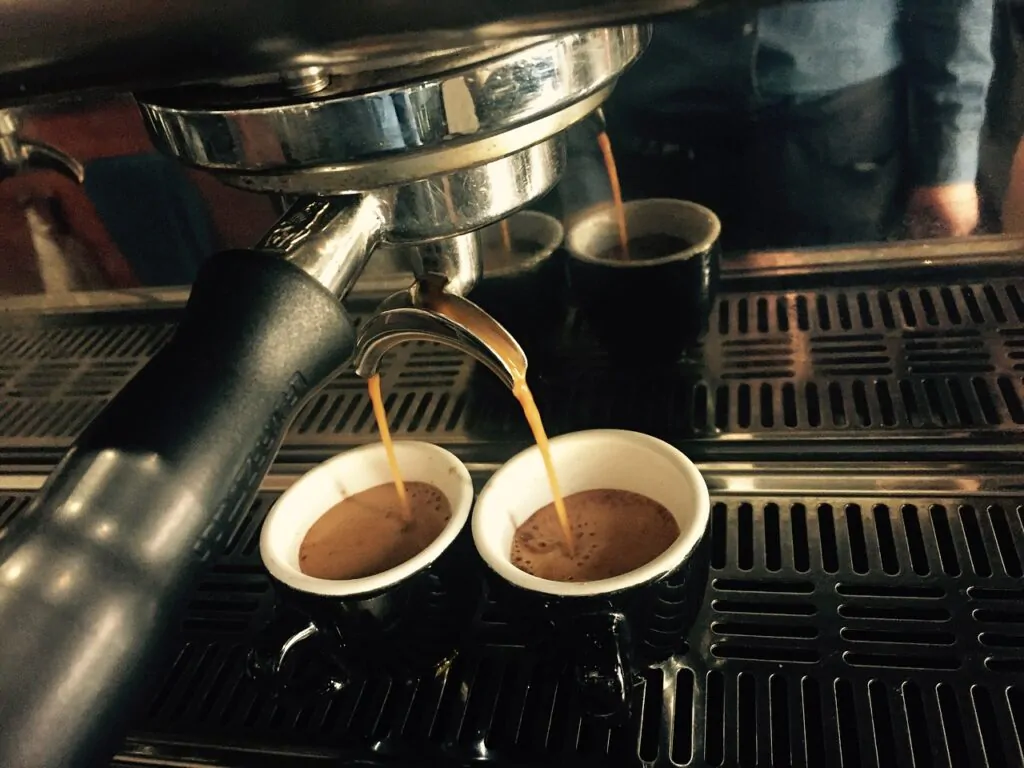Under extraction is a nuanced topic that requires much more explanation than a paragraph or two. Read on to know how to fix under extracted coffee.

You may have heard some coffee enthusiasts refer to a brew as under-extracted or over-extracted and wondered just what that means. Maybe you even wondered how you can identify and possibly fix it.
Many people might not realize that they are making coffee against the recommended way of brewing, drifting through their lives with underwhelming coffee. By reading this article, you’re well on your way to perfecting your brew.
How do you fix under-extracted coffee? You can fix under-extracted coffee by using more water, using hotter water, brewing longer, using finer coffee grounds, or more coffee grounds. Experimentation is key.
Under extraction is a nuanced topic that requires much more explanation than a paragraph or two. Luckily, it’s easy enough to fix once you know what it is. To fully understand it, and perhaps help you know how to avoid underwhelming coffee, I aim to help clear things up in this article.
But, before we dive too deep into this subject, we should learn just exactly…
- What Is Under Extracted Coffee?
- What Ways Can You Fix Under Extracted Coffee?
- Is There A Use For Under Extracted Coffee?
- How To Fix Under Extracted Cold Brew Coffee
- How Do You Fix Under Extracted French Press Coffee?
- How Do You Fix An Under Extracted Espresso Shot?
- A Little More On Under-Extracted Coffee
- Conclusion
- Related Questions
What Is Under Extracted Coffee?
To put it simply: the process of brewing a cup of coffee involves the water running through the ground coffee beans. This process extracts the flavors from the beans into your cup.
When we say coffee is under-extracted, we simply mean that not all the delicious flavors have been extracted from the beans and that you’re left with what might taste like water that wants to be coffee. Nobody wants that, it’s just sad.
Identifying under-extracted coffee can be a tad tricky if you don’t know what to look for, or taste for. Under extracted coffee can be described as sour, salty, thin, and lacking coffee’s natural sweetness.
Since there are many types of coffee mixtures, bean types, and brewing styles, it adds another obstacle for identifying under extraction. However, by trying out different ways of brewing the same type of coffee, you can possibly identify an under-extracted coffee much easier.
Identifying it is the first step to making that wonderfully blissful coffee of your dreams!
What Ways Can You Fix Under Extracted Coffee?
So, it seems you’ve got an unfortunately weak coffee haunting your taste buds and coffee machine. How can you deal with it? The best ways to prevent under extraction for your next cup of Joe are:
Try a finer grind
It’s possible your coffee grounds are too coarse and the water is just passing through the gaps. It’s not even stopping by to say hello and get to know the bean flavor. Rude! Amp up the grind finer to see if it has the desired effect.
Brew hotter
If the water isn’t hot enough it can’t properly extract flavors, and you’re left with hot water that tastes like it has only been in the general vicinity of coffee grounds. The hotter the water, the easier and more complete it can pull out the flavors. Don’t use too hot of water though, as it can extract too quickly and ruin the flavor.
Coffee enthusiasts recommend the water to be around 195 to 205 degrees Fahrenheit.

Brew longer
It’s possible to have both the right grind and water temperature, but still, brew an underwhelming coffee. If the water had prematurely left before it could finish its job in dissolving all the flavors, you will be left with an empty-tasting coffee. Try brewing for longer to give the water a chance to fully extract flavors.
Just don’t leave it in too long or you’ll over-extract it, which is a whole new problem.
Use fewer coffee grounds
It’s possible your problem is caused by having so many coffee grounds packed into one space that you are actually choking out the water, causing it to half-dissolve lots of grounds rather than fully dissolve the correct amount of grounds. The golden ratio is considered to be about one to two tablespoons of ground coffee to every six ounces of water, and while this is adjustable to your taste preferences, you need to be cautious of adding too much or too little.
Use more water
This has a similar effect as brewing too short, so it’s okay if you get them mixed up the first few times. Even if you have everything else checked off and you still seem to end up with weak coffee, it might be the amount of water you’re using. Use too little water, and it doesn’t have enough time to pull out the flavors.
Try adjusting the amount of water you use slightly.
Clean your filters, coffee machine parts, and use fresh water where applicable
If your equipment and water aren’t up to par, then your coffee suffers as a result. Coffee equipment usually comes with instructions on how to clean, descale, and how frequently these need to be performed. For water, it’s best to use fresh filtered water.
If using your tap, let the water run for a few seconds before using for coffee.
All of these are great tips for diagnosing what’s wrong with your next cup of coffee, but what about the cup, or cups, that you have already brewed? If they are too bad to drink as is, but you don’t want to waste them, what do you do?
Is There A Use For Under Extracted Coffee?
Maybe after your attempts at the perfect cup, you are left with so many not quite perfect coffees that you just don’t know what to do. Sure, you can just dump them down the drain, but that’s a huge waste and is pretty upsetting to witness. Especially since there are, in fact, ways to use these imperfect brews without tossing them.
Waste not, want not!
- Try running half as much water as you used before over the same beans you just used. In some cases, this might pull out the rest of the flavor, as long as you also lengthen the time it brews.
If you are using an electric brewer this would be the strong, or another similarly worded name, setting. Taste them separately then together to see if it helped.
- Freeze for use as ice cubes for iced coffee. Rather than watering down your iced coffee with, well, ice cubes made with water, why not freeze your under-extracted coffee into ice trays for use later and nip that watery coffee in the bud.
- Use in blended drinks, like a frappé. The extra flavors added might help balance out the taste of the coffee, and the blending or whipping will add an airy feeling.

- Perhaps just add more cream, sugar, and or flavored coffee creamer if that’s your thing. For those who like a little something extra in their coffee, under-extracted coffee’s sourness might be battled with more of whatever you typically add.
- Use to lessen the sweetness of an overly-sweet coffee. If you or your barista misjudged how much sweetness to add to your coffee and it tasted too sweet, you can try adding under-extracted coffee to balance it out a bit.
This is all well and dandy for hot brewing the typical cup via a coffee machine or pour-over, but what about other brewing methods?
How To Fix Under Extracted Cold Brew Coffee
Cold brew isn’t excluded from being under extracted. Keep in mind that cold brew requires that you use a really coarse grind. Too fine and it can become over extracted and too bitter. If you think your cold brew has been a victim of under extraction, here’s what you can do:
- Leave it to steep longer. Whether you’re new to making a cold brew or have made it before, sometimes we can get understandably excited for our coffee and end up removing it before the water has had time to extract all the flavors and oils. Cold-brew should be left alone for at least ten hours, and no more than twenty-four.
Any less and you have under extraction!
- Use the right amount of coffee grounds. For cold brewing, you need to have the perfect balance of coffee grounds. Too much and it gets soupy, and too little and almost no flavor makes it through. The recommended ratio is one cup of coffee grounds to four cups of water.
- Don’t dilute too much. A successful cold brew is much stronger than a hot brew is, so it’s often watered down a little bit with actual water or other liquids. If you have added too much water to your cold brew you will undo all your hard work and make it weak.
It doesn’t take much extra water, you should never exceed more than half of the original volume of your cold brew.
- Use the right coffee grind size. As I said before, too fine and it can dissolve too quickly, but it goes both ways. You do need a coarse grind but not too coarse like, say, just dropping smashed beans into a jar of water.
That won’t work, and you’ll just be left with lightly bean flavored water. You’ll want to use something that’s about as coarse as cracked peppercorns or really grainy sand.
How Do You Fix Under Extracted French Press Coffee?
Using a French Press is more fun than it should be. It’s just so satisfying to slowly squash those coffee grounds. A common step people tend to overlook is that after pressing the grounds down, you have to let it sit for another minute to two minutes.
I understand completely that you’re excited for your coffee, but it’s best to resist the urge to remove it too quickly. The wait is worth it, I assure you.
- Let it steep for longer. The typical brew time for French Press coffee is around 4 – 5 minutes, so don’t take it out too soon. Remember to let it sit for that one to two minutes after pressing down for optimal flavor output.
- Use more grounds. If you’re using a dark roast, you may need to use more grounds than you normally would. The darker that coffee beans are roasted, the more mass per volume they lose, because the heat is stripping the bean of its natural moisture.
Basically, the longer you roast them, the lighter they feel. Try adding slightly more grounds than you did before until you reach your desired taste.
- Stir the coffee grounds after adding the water. It may not seem important, but when making French Press coffee, it is vital to stir the grounds for 15 to 30 seconds after pouring the water in. This helps the water and grounds get to know each other better before they steep.
Sometimes if you don’t do this, the grounds will just sit at the top, unaffected by the water, even if you had put the grounds in first and poured the water over them. Stir!
- Find the right balance of coarseness. Much like cold brew, you want some pretty coarse grounds. But unlike cold brew, you are still using hot water and brewing for a shorter time.
You don’t want them as coarse as you would have for cold brew, but don’t use too fine of grounds or it will be very bitter.
How Do You Fix An Under Extracted Espresso Shot?

Of all the entries on this article, espresso has to be brewed at the shortest time. Espresso is also a little tricky to master, as it requires very specific preparation.
A perfect espresso shot typically looks dark brown, with a nice and frothy tan-like crema on the surface. If your shot comes out too fast, looks like the wrong color, and loses its crema soon after being made, you may have an under-extracted shot.
- Use medium roasted beans (see Amazon). Coffee enthusiasts say that medium works best for espresso. If your beans are too light it can make your espresso taste sour, and if it’s too dark it can make your espresso taste burnt.
- Your beans are too fresh or too old. If you roast your own coffee beans or purchase freshly roasted beans, you will need to let them degas for at least a few days before using, or else the water can’t extract all the flavors properly.
If your beans are too old, possibly several months to a year or so old, it will take much longer to extract flavors. If you have new or old beans, it’s best to use them elsewhere.
- Your brew time might be incorrect. Typically, an espresso shot should only take about 25 to 35 seconds. If it ends up being more or less than this, you need to adjust the time. The two entries below can help with that.
- Use finer grounds. Espresso calls for some pretty fine grinds because of the extraction method. If you have coarse coffee grounds the water will pass through too fast. Don’t go too fine, though, or you’ll over-extract and possibly stop any water from coming out at all.
- Tamp harder. Even if your grind is the right consistency, you can still have the water pass too quickly if you haven’t tamped it hard enough. Just be sure not to tamp too hard or you’ll choke the water and almost nothing will come out.
A Little More On Under-Extracted Coffee
I briefly touched on extraction and what it means at the beginning of this article, but now it’s time to put on our science pants and understand extraction a little bit more. Extraction is probably the most important part of brewing coffee. Without it, you just wouldn’t have coffee.
You would end up having just hot water and toasted beans. That doesn’t sound very appetizing, does it?
When water comes in contact with ground coffee, it starts dissolving all the unique flavors that make coffee, well, coffee. The first compounds that are extracted are acids and fats.
Acids are pretty chemically simple which is why they’re among the first to come out, while the oils and fats of the beans aren’t super simple but are hydrophobic so they rinse out easier. Most of the aromatic properties of coffee come out at this stage as well.
Next, are the sugars, which will balance out the sourness of the acids, and the bitterness of the coming caffeine. Lastly, the water breaks down the bitter notes found in the plant fibers, such as the caffeine.
All of these are the important pieces to a deliciously flavorful and balanced coffee puzzle. The hotter the water is during brewing, the faster this process is. This doesn’t mean that you should use hotter water than recommended.
After all, if the water is too hot it will produce a negative effect, making the coffee taste hollow and burnt. Yuck!
If the water is unsuccessful in dissolving all the flavors before it is done brewing for any reason, this is what’s called under extraction. If the water finishes pulling out all the flavors but is left brewing too long and pulls out way more bitter compounds and plant fibers than it should, this is called over-extraction.
Conclusion
Under extraction can happen to anybody, so it’s nothing to be ashamed of! Hopefully, with your newfound knowledge on this topic, you can fix any extraction-related mistakes that may pop up. I strongly encourage you to run some experiments of your own to help you find the perfect coffee that fits your specific tastes.
After all, the only person that can tell you what your favorite style of brew it would be you.
Happy brewing!
Related Questions
Can this information be used for over-extracted coffee?
It can, more or less. Over-extraction is almost like the opposite of under-extraction. You would reverse what you would do to under-extracted coffee, in a sense. Shorter brew time, more ground coffee, less water, coarser coffee grounds, etc.
